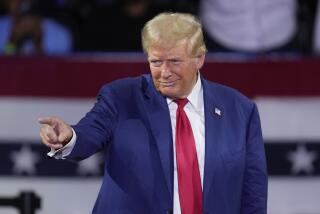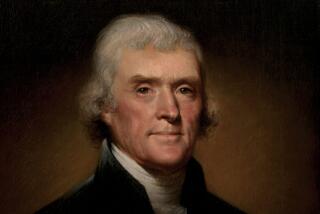Charitable Groups Cheer Clinton Tax Proposal : Donations: Plan expands break given to those who make contributions of art, stocks and real estate.
WASHINGTON — Museums, universities and charitable organizations are mobilizing support for a Clinton Administration proposal that would expand a tax break for contributions of art, securities and other valuable assets.
The proposal--tucked in the back pages of President Clinton’s economic agenda--would allow some of the nation’s wealthiest taxpayers to cut their income-tax bills by donating art, stocks and real estate to nonprofit groups based on the current market value instead of on the original purchase price.
If approved, the biggest beneficiaries would be the nation’s museums, universities and conservation groups, which have reported dramatic decreases in donations since approval of the 1986 Tax Reform Act, which limited the tax deduction to the original cost of the item regardless of whether it had grown in value over time.
Expanding the deduction would cost the government an estimated $70 million in 1994, growing to an estimated $79 million in 1998, a relatively small amount in a $1.5-trillion budget.
“This has been a continuing struggle for us over the past six years,” said Jason Hall, governmental affairs director of the 2,700-member American Assn. of Museums. “We are certainly going to continue and redouble our efforts to make sure that this provision passes because it is so vital as a way of converting private wealth to public good.”
Support for the tax proposal also came from the Washington-based Land Trust Alliance, which represents 500 local and regional land conservation organizations.
But the celebration was held in check Friday by Citizens for Tax Justice, which sharply criticized the Clinton plan by claiming it offers a huge tax loophole for the very rich.
“It’s inconsistent with (Clinton) saying that he is going to take the game-playing out of taxes,” said Robert S. McIntyre, director of the watchdog group. “It’s inconsistent with him saying he’s going to get rid of loopholes that keep people from paying any taxes at all.”
But tax lobbyist Charls E. Walker said it is incorrect to call the provision a loophole because taxpayers are giving away a valuable asset without expecting to receive a return on an investment, as might be the case with other tax shelters.
“They have to give the money away. It’s not like they are going to spend the money at Neiman Marcus,” Walker said. “Some people just cannot stand the idea of a rich person getting a tax reduction.”
The museum association also argues that the tax break is not a loophole, noting that under the federal tax code, deductions for donated property cannot total more than 30% of adjusted gross income each year.
Officials for the museum association said that in the two years after the Tax Reform Act, donations to their facilities dropped by over 60%.
Those restrictions were relaxed for 18 months, ending June 30, 1992, and during that time such gifts to museums rose by more than 500%, according to figures released by the museum group. The suspension applied only to tangible items, such as works of art, and not to assets such as stocks or real estate.
At the Los Angeles County Museum of Art, the figures were equally dramatic. For the first half of 1992, when the restrictions were relaxed, contributions to the museum were valued at $13.2 million. In the second half of the year, under the stricter rules, donations dropped to just under $4 million.
Efforts to expand the tax deduction permanently were included in legislation vetoed by President George Bush.
“It would be extraordinary if it happens,” said Richard Koshalek, director of Los Angeles’ Museum of Contemporary Art. “It would give every museum in the country an opportunity to continue building collections of great cultural benefit to their communities. We were extremely successful during the 18-month ‘window of opportunity,’ and we expect that if the law is changed, collectors in Los Angeles will be as generous in the future as they were in the past.”
At the J. Paul Getty Museum in Malibu, director John Walsh was equally ecstatic about the Clinton proposal. “These tax deductions only cost the public a small amount of revenue, but they’ve got terrific leverage because they will attract vastly greater gifts of money and works of art for public institutions,” he said.
“If this goes through, this could be the best news for American museums, especially in light of increased federal, state, municipal and private fiscal cuts,” said Stephanie Barron, curator of 20th-Century art at the Los Angeles County Museum of Art. “Tax incentives are the most significant resource (that) museums--large and small--can use to encourage donations of works of art to build collections and to keep great works of art from being traded in salesrooms.”
More to Read
The biggest entertainment stories
Get our big stories about Hollywood, film, television, music, arts, culture and more right in your inbox as soon as they publish.
You may occasionally receive promotional content from the Los Angeles Times.










